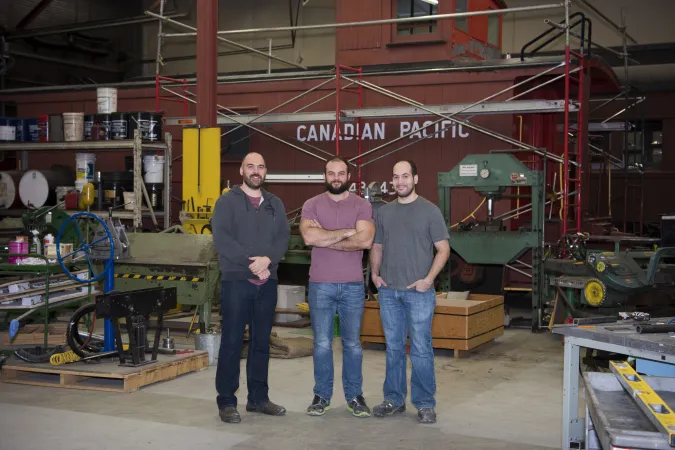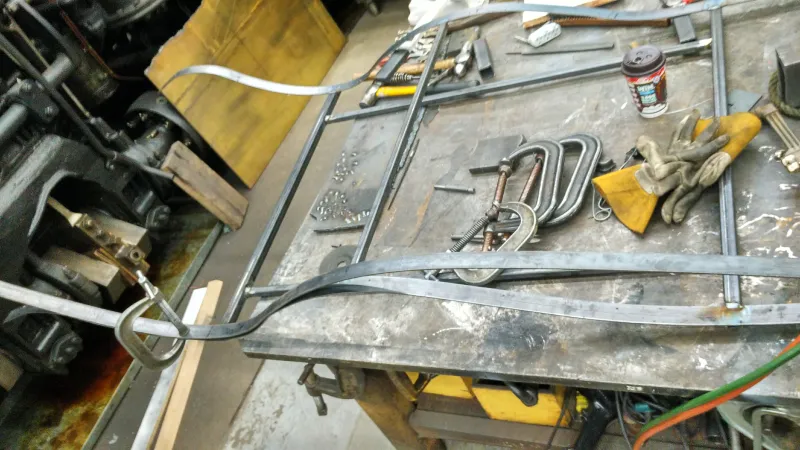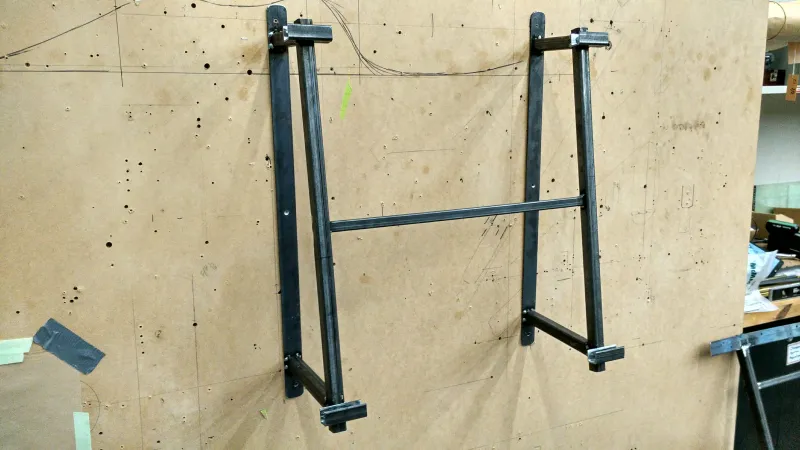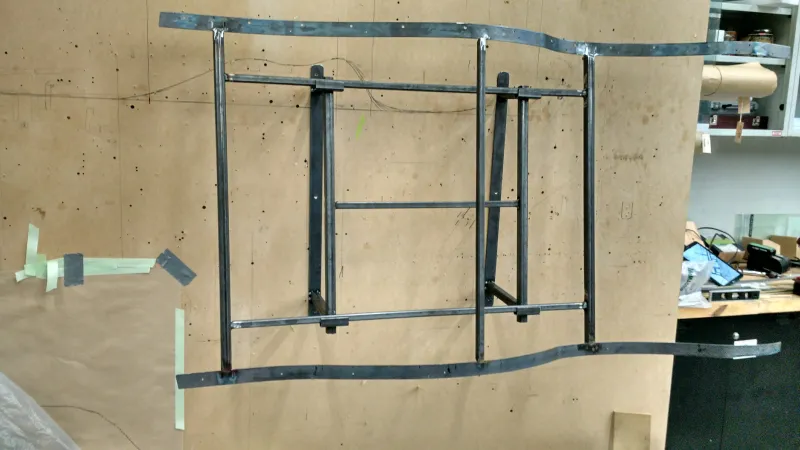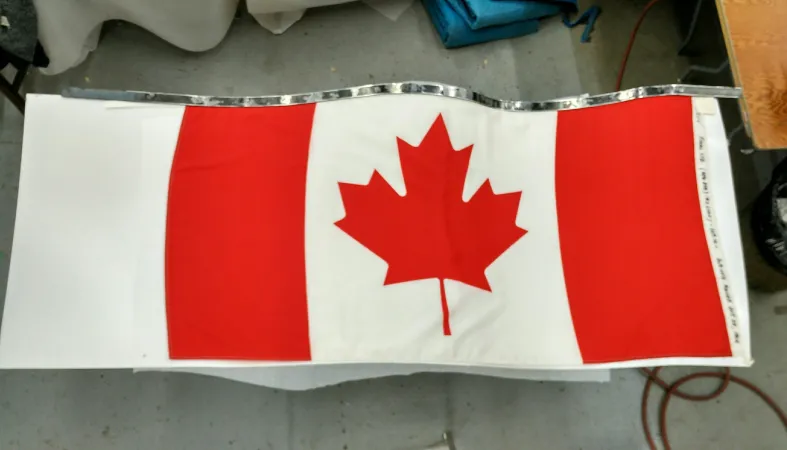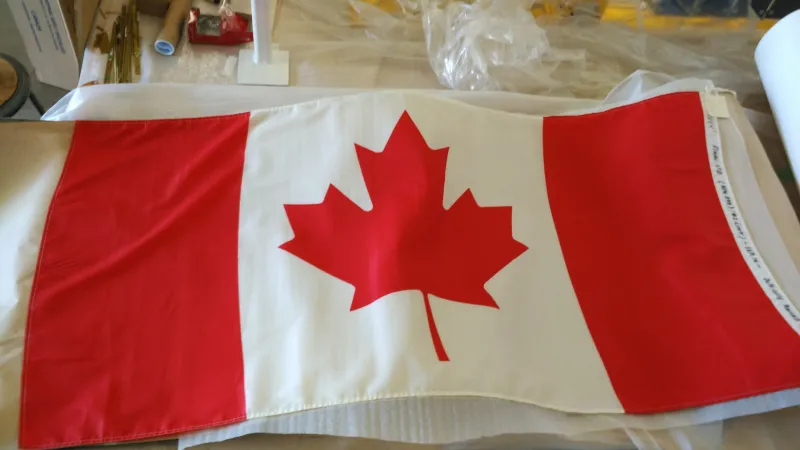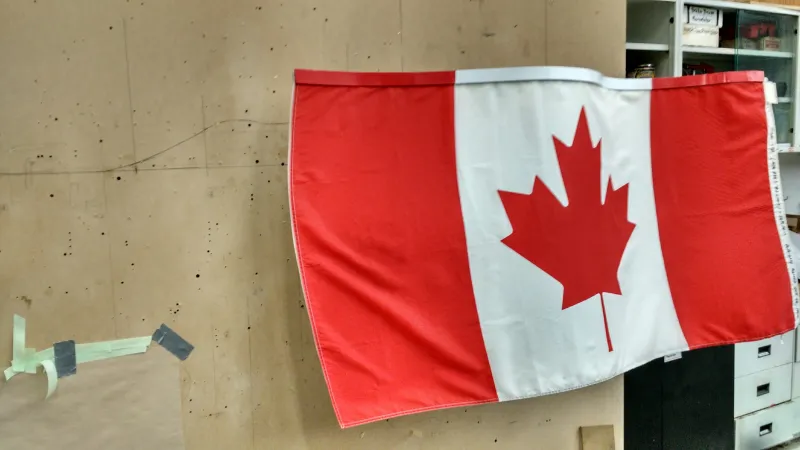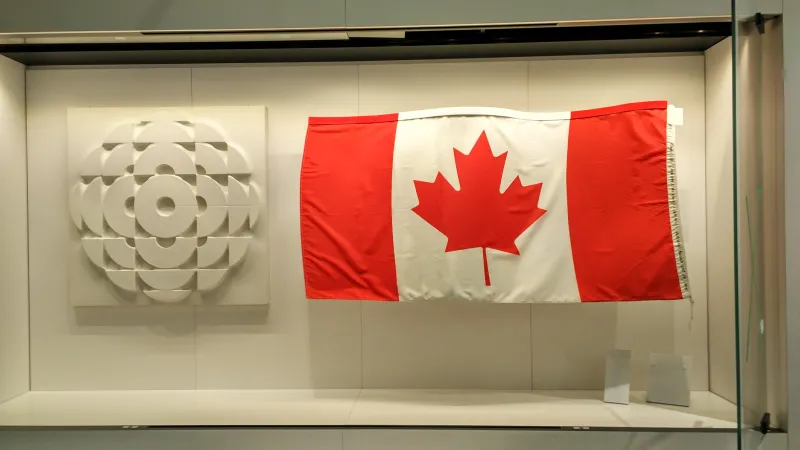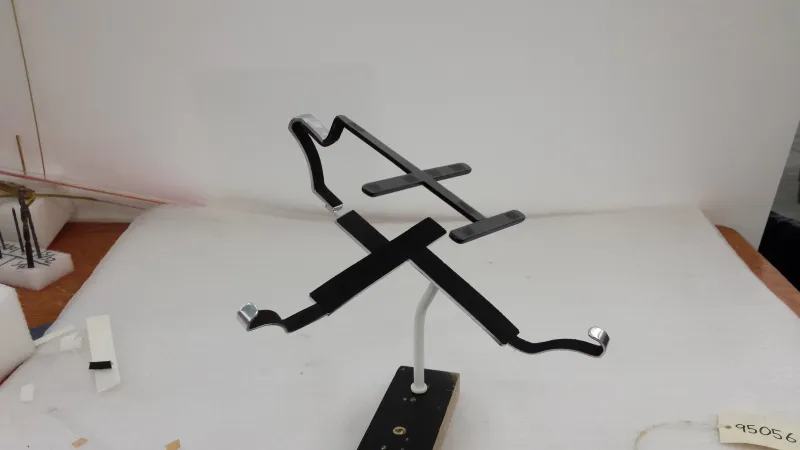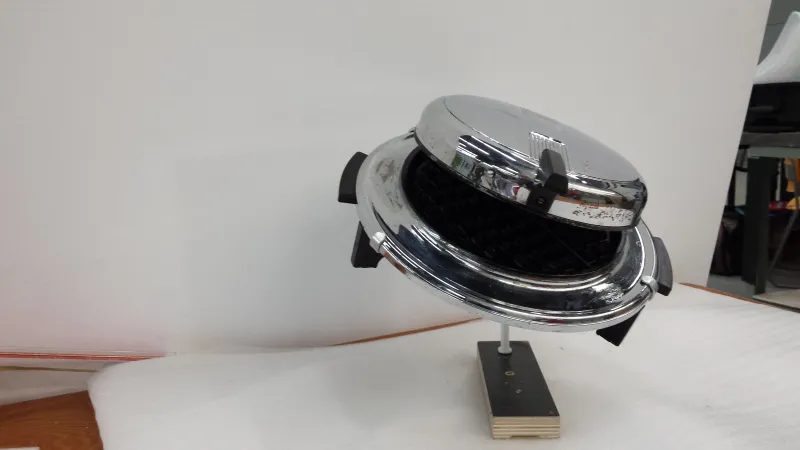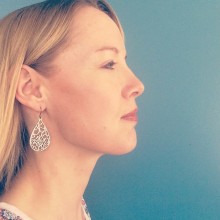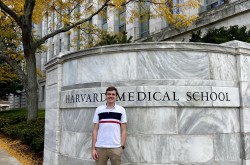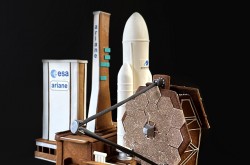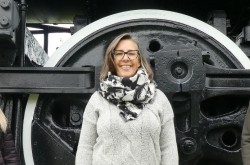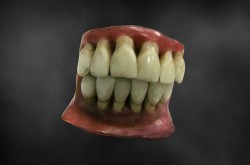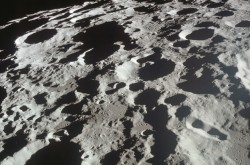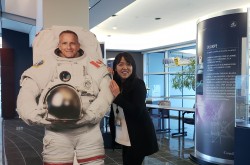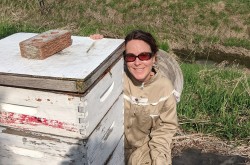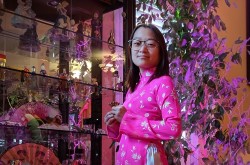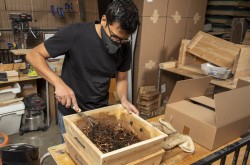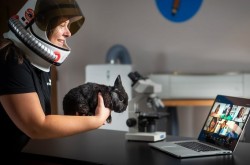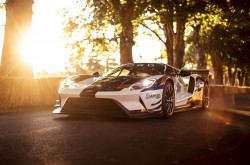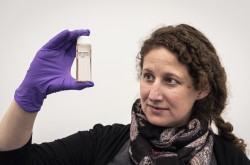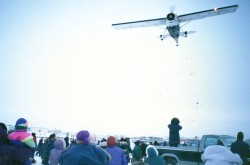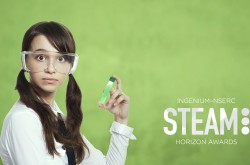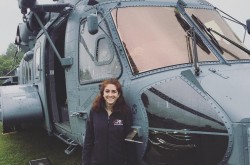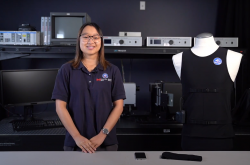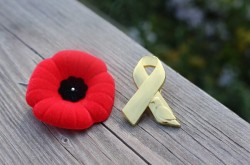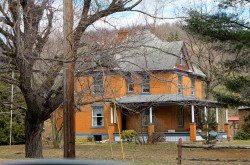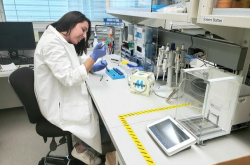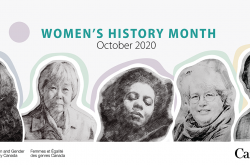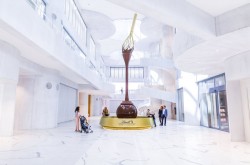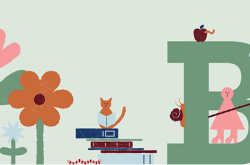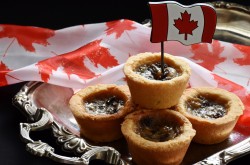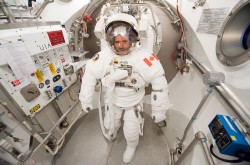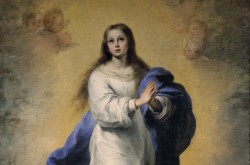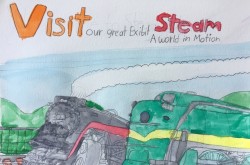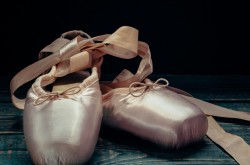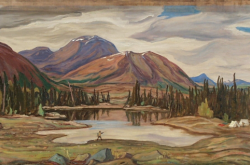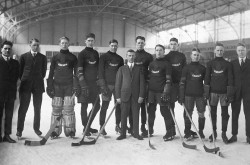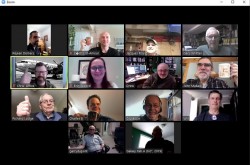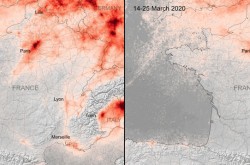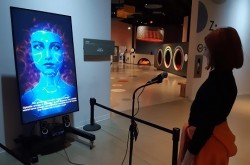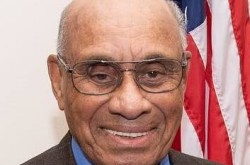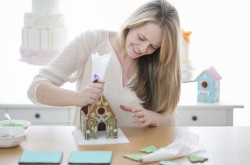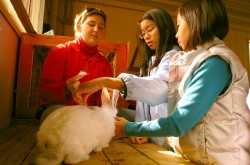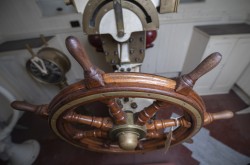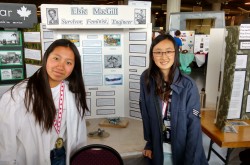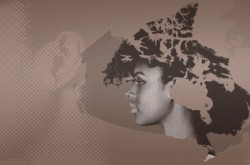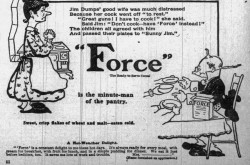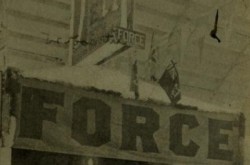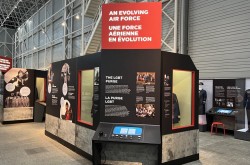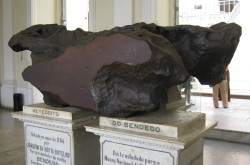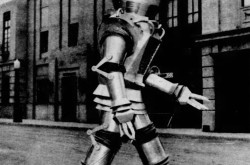Behind the Scenes: Meet the mountmakers at the Canada Science and Technology Museum

The new Canada Science and Technology Museum has more than 2,900 artifacts on display throughout its various galleries. Before the museum reopened its doors in November 2017, a small team worked tirelessly – for nearly a year – to design and create the mounts and interfaces for all objects on display. The Channel sat down with three members of the team to talk about how they work their behind-the-scenes mountmaking magic.
Names: Kenn Bingley, Giuseppe Crupi, and Derek Brousseau
What does your job entail?
“You have an object that needs to go on display, so we work with the museum’s creative team, the build design team, and the curator. We also work with the more technical side – collections and conservation. We try to mount the objects in a way that will display them nicely, tell the story the curator wants to tell, but also do it in a way that’s safe for the object. How we get there depends on the individual, on their talents. We work with everything from wood, plastics, brass, steel, stainless steel; whatever is required.”
—Kenn Bingley
How long does it take to make a mount?
“Some things will take you an hour. I did one mount [for the Canada Museum of Science and Technology] that took a week and a half – that was a boundary marker from Halifax, 1,300 pounds of stone. There had to be a big frame for the mount, since there were concerns with the object’s weight. There was also a Canadian flag – which is now on display in Artifact Alley – that took a while, just because of the way they wanted it displayed; it looks like it’s waving. We couldn’t stitch it – it would damage the artifact – and we couldn’t use magnets because it would be hanging there for so long and it would eventually stretch the areas with the magnets. We had to come up with a press mount, which we hadn’t done before. Sometimes you take things for granted – you think you know how you will design a mount – and then have to go back to the drawing board.”
—Kenn Bingley
Creating a mount for a Canadian flag
What considerations do you need to make when deciding what material to use for a mount?
“The first consideration is artifact safety. For most mounts we can use a variety of materials, but certain materials are easier to work with. The materials we use most are brass and steel. For a paper artifact, we can use acrylic, however, sometimes people don’t like acrylic because it’s shinier and more obvious.”
—Derek Brousseau
“We always look at the safety of the object first, but a close second is esthetics; we’re always looking for different ways to mount things.”
—Kenn Bingley
“There also has to be an interface between the materials we use and the object. The amount of time the object will be display affects the choice of material, too – because things will start to off-gas, which can damage the object. I think the best mounts we do is when we don’t see it at all – so we try to make it hidden. When we’re good at our job, no one even notices.”
—Giuseppe Crupi
What were some of the most interesting challenges you faced while preparing mounts for the museum opening?
“I became known as the mount boat specialist. I did a mount for a 33-ft birch bark canoe at the Canadian Museum of History, so I had a St-Lawrence skiff that was going on display here [at the Canada Museum of Science and Technology]. I pretty well did the same style – and it worked great.”
—Derek Brousseau
“I worked on a waffle maker in the sci-fi section – it’s there because it looks like a UFO. I suggested having the waffle maker look like it’s flying through the air. It’s open – so you can tell it’s a waffle maker. That’s an example of adding design elements to a mount. We always try to have the artifacts animated, because if you ever see an exhibit where everything’s just sitting there, it’s boring. So sometimes we have things that are off the wall, that are coming out at you.”
—Giuseppe Crupi
Creating a mount for a waffle maker
“Sometimes curators have a very specific vision; they can show you an object in a way that you would not have imagined it. I worked on a “smart coat” in the Wearable Tech gallery. Tom Everett, the curator, wanted the coat to kindof look like it was floating and interacting with itself; the idea was it’s a smart coat and had all this technology – he wanted to show off the different bits of technology. I didn’t really understand what was significant about the coat until I spoke to him. From there, I was able to make a mount that showed off what he thought was special about it. It’s fun to help somebody else have their vision come forward, or work right alongside them.”
—Kenn Bingley
What kind of training do the three of you have?
“I have a fine arts degree, and I completed Museum Studies at Algonquin College. I worked in collections at the Canadian War Museum before coming here. It’s all on-the-job training. Woodworking and welding tie in, but you need the Museum Studies.”
—Kenn Bingley
“I took the Building Construction Technician program at Algonquin College, followed by the Museum Studies program at Algonquin. I taught myself welding while I was building my truck. Previously, I worked at the Canadian Museum of History. If you’re a mountmaker, you need to know how everything works, how everyone comes together; you can’t really do it by yourself. You have to coordinate with collections, conservation, curators, and project managers – and ask lots of questions.”
—Derek Brousseau
“I have a degree in history, and I completed the Museum Studies program at Algonquin College. There’s not that many people who do this, so you need to learn the craft from someone else.”
Giuseppe Crupi
What personal attributes do you need for your job?
“A big part of the job is managing your time and knowing how long things are going to take. Considering it’s sortof a creative process, that’s a bit difficult to do sometimes. Plans always change; often mounts will need to be modified. We’re in an interesting spot in that we’re between the planning and the actual reality.”
—Kenn Bingley
“You have to be creative and resourceful. That’s why I love what I do, because you’re thinking outside of the box every day. Each challenge is different in some way – it keeps you on your toes.”
—Derek Brousseau


